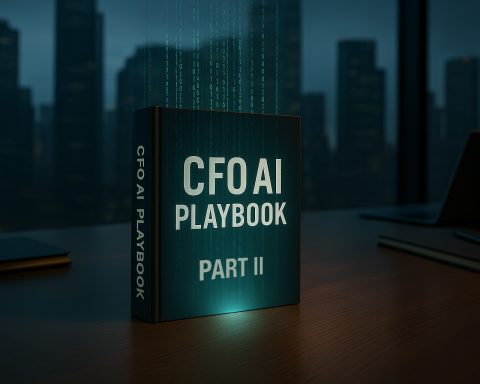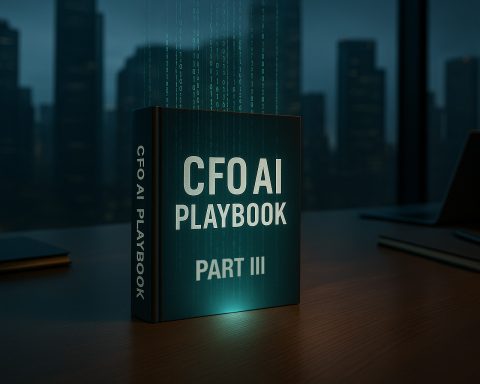Doris Pickering’s presented “The Importance of a Good Introduction“ to the Women’s Special Interest Group of The Financial Executives Networking Group on March 20, 2024 the following is what I learned.
In a world where communication is key to professional growth, Doris Pickering stands out as a beacon of expertise and insight. With years of experience under her belt, Doris has carved a niche for herself in the realm of professional speaking and communication. Her unique approach does not merely focus on the superficial aspects of speaking but dives deep into how effective communication can transform one’s professional image, build client relationships, and skyrocket business success.
Doris’s methodology is not a one-size-fits-all; she tailors her coaching to meet the individual needs of her clients, whether they are attorneys aiming to enhance their executive presence or entrepreneurs seeking to amplify their visibility. Her strategies are designed to leverage speaking as a powerful tool to attract clients, generate revenue, and establish authority within any given industry. Beyond her direct coaching, Doris’s insights offer a comprehensive understanding of how one’s communication style can significantly impact their personal and professional life, making her a sought-after mentor in professional speaking and communication.
The central thesis of Doris Pickering’s teachings underscores a foundational truth in the business world—effective speaking and a commanding presence are indispensable tools for attracting clients and fostering business growth. In an era where the market is saturated with competing voices, the ability to articulate one’s value proposition with clarity, confidence, and persuasion sets successful professionals apart. Doris elucidates that it’s not just what you say, but how you say it that resonates with potential clients, compelling them to engage. This principle is pivotal for anyone looking to elevate their professional stature, secure new business opportunities, and establish a lasting impression in the minds of their audience. Through mastering the art of communication, professionals not only enhance their personal brand but also create a ripple effect of opportunities for business expansion and client engagement.
The Role of Speaking in Professional Growth
Despite its palpable benefits, the importance of speaking in professional settings is frequently overlooked. In a digital age dominated by emails, texts, and written communication, the power of a well-delivered speech or presentation is often underestimated. Yet, it is speaking that forms the heart of leadership and influence. The ability to articulate ideas clearly, persuade others, and convey a vision is what distinguishes exceptional leaders from the merely competent. Speaking is not just about transmitting information; it’s about creating connections, inspiring action, and making ideas resonate. In professional environments, where collaboration and team dynamics are crucial, effective speaking can bridge gaps, motivate teams, and drive initiatives forward. Unfortunately, many professionals neglect this skill, focusing instead on digital communication or written proficiency. However, as Doris Pickering highlights, honing one’s speaking abilities can significantly enhance professional relationships, leadership image, and, ultimately, business success.
Speaking stands apart from other forms of marketing and client attraction in several distinct ways. Unlike written content or digital marketing, which relies on the static conveyance of messages hoping to engage the reader’s attention span, speaking directly engages an audience in real-time, offering an immediate and dynamic interaction. This form of direct engagement enables the speaker to adjust their message based on audience reactions, fostering a level of personalization and impact that other mediums cannot replicate. Furthermore, speaking offers the unique advantage of conveying the speaker’s passion, confidence, and authenticity through their tone, body language, and presence, elements that are often diluted or lost in written communication. In the realm of client attraction, these personal connections can be the difference between a prospective client becoming intrigued by your message or overlooking it entirely. Additionally, speaking positions professionals as thought leaders within their industry far more rapidly and effectively than other marketing strategies, establishing their credibility and authority through the power of their voice and the strength of their message. This direct, personal engagement not only attracts clients but also builds lasting relationships founded on trust and respect, pivotal components in any successful business endeavor.
Introduction to “Zip lines”
Zip lines, in the context of professional communication, do not refer to the adventurous outdoor activity but rather symbolize a method of delivering messages swiftly and efficiently within a corporate environment. Just as a zip line propels its user from one point to another in the most direct path possible, this metaphorical use of “zip lines” in communication underscores the importance of cutting through unnecessary clutter to convey clear, concise, and impactful messages. The purpose of employing such a technique is to ensure critical information is shared with speed and precision, fostering an environment where decisions can be made quickly, and teams remain agile in response to new developments. In today’s fast-paced business world, the ability to communicate effectively using the “zip lines” approach can significantly enhance team dynamics, accelerate project timelines, and improve overall organizational efficiency. This methodology echoes the broader themes of effective speaking and communication strategies championed by professionals like Doris Pickering, emphasizing not just what is communicated but the method and speed with which it is delivered.
Doris Pickering’s formula for crafting impactful statements and delivering messages with precision can be seen as a blend of clarity, conciseness, and compelling storytelling. This approach prioritizes the essence of the message, ensuring that it strikes a chord with the audience immediately. Clarity involves stripping away any superfluous details that might detract from the core message, akin to the “zip lines” metaphor of direct communication. Conciseness further distills the message to its most potent form, making every word count and ensuring the audience’s attention is captured and retained. Lastly, compelling storytelling weaves these elements into a narrative that resonates on a personal level, engaging the audience’s emotions and intellect, thus making the message memorable. This formula not only establishes a direct and impactful method of communication but also emphasizes the importance of understanding the audience, tailoring messages to their needs and expectations to forge a stronger connection and inspire action.
Analyzing Examples of Effective “Zip Lines”
To truly grasp how the elements of what one does, who it’s for, and the desired outcome converge to craft a compelling message, it’s essential to dissect the anatomy of effective “zip lines” in professional communication. Each component plays a pivotal role in ensuring the message not only reaches the audience but also resonates and prompts action.
What One Does: This element is crucial as it delineates the specific action or service provided. It sets the stage by clarifying the purpose of the communication, allowing the audience to immediately understand the relevance of the message to their needs or interests. In a zip line, this clarity acts as the launch point, propelling the message forward with a clear direction.
Who It’s For: Identifying the audience is paramount. This component tailors the message, ensuring it speaks directly to the needs, challenges, or desires of the intended recipients. By doing so, the message becomes personalized and engaging, significantly increasing the likelihood of the audience’s investment in the content. In the context of a zip line, this is akin to choosing the right path that leads directly to the intended destination, avoiding detours that could dilute the message’s impact.
Desired Outcome: The final piece of the puzzle is the desired outcome, which outlines what the communicator hopes to achieve with their message. This could range from inspiring a change in behavior, encouraging engagement, or eliciting a specific action from the audience. The desired outcome is the destination of the zip line, where the effectiveness of the message is ultimately measured. This element ensures that the message has a clear call to action, guiding the audience towards the intended result.
Analyzing examples of effective zip lines involves peeling back these layers to understand how they collectively contribute to a message that is direct, impactful, and motivating. It’s the synergy of these elements that makes a zip line not just a method of communication, but a strategic tool for achieving specific, tangible results in the fast-paced realm of professional communication.
The versatility of the “zip lines” communication method stretches across a wide array of professions, making it a universally valuable skill. In the fast-moving world of tech startups, for example, founders and developers rely on clear and concise messaging to pitch innovative ideas to investors, often under tight time constraints. Here, the “zip line” approach ensures that the core of the innovation is communicated effectively, capturing the essence of what makes their proposition unique and worth investing in.
In healthcare, professionals employ “zip lines” to communicate critical patient information swiftly and accurately. The high-stakes environment demands that information is passed without ambiguity, where clarity can quite literally save lives. Similarly, in education, teachers use “zip line” techniques to distill complex concepts into digestible, memorable pieces of information, adapting their messages to the diverse learning needs of their students.
Marketing professionals also harness the power of “zip lines” to craft compelling narratives that resonate with target audiences across various platforms. In an era where consumers are bombarded with information, the ability to cut through the noise and deliver a message that sticks is invaluable.
Thus, whether it’s conveying a startup’s value proposition, ensuring patient safety, facilitating learning, or connecting with consumers, the “zip line” methodology proves its worth across different professions by its ability to deliver clear, concise, and impactful messages tailored to specific audiences and objectives. This adaptability makes it a crucial tool in the communication arsenal of professionals across the spectrum.
The Importance of Professional Presence
Doris emphasizes the significance of professional presence in meetings and networking events as a critical facet of effective communication. In her view, professional presence is not merely about the physical appearance or attire but encompasses the entirety of how individuals conduct themselves — their demeanor, body language, and ability to listen and engage thoughtfully. Professional presence acts as a silent but potent form of communication, conveying confidence, competence, and credibility before a single word is spoken. Doris argues that in the context of meetings and networking events, where first impressions are impactful and often lasting, a strong professional presence can set the tone for the interactions that follow. It opens doors to meaningful conversations and connections, building a foundation of trust and respect that aids in the successful delivery of one’s “zip lines.” Thus, mastering professional presence is as crucial as mastering the art of verbal communication, for it enhances the overall messaging, ensuring it is received in the best possible light.
In the realm of professional engagements, the distinction between being “mindful” versus having a “mind full” is both subtle and significant, reflecting two vastly different approaches to interaction and communication. Being mindful involves being fully present and engaged in the moment, with a clear, focused mind that allows for active listening, thoughtful responses, and a genuine connection with the conversation and people involved. This state of mind fosters effective communication and collaboration, as one is able to accurately process information, empathize with others, and contribute constructively to discussions.
Conversely, having a mind full refers to a state where one’s mind is cluttered with distracting thoughts, concerns, or multitasking, which detracts from their ability to be fully present. Professionals with a “mind full” often find themselves overburdened by their own thoughts, hindering their ability to listen actively or engage meaningfully in conversations. This can lead to misunderstandings, overlooked details, and missed opportunities, as they are not fully attuned to the discussions or people around them.
The contrast lies not only in the quality of professional interactions but also in the impact on personal well-being and productivity. Mindfulness encourages a calm, focused approach, reducing stress and enhancing decision-making capabilities. On the other hand, a mind filled with distraction leads to increased stress levels, diminished productivity, and a greater likelihood of errors. Therefore, cultivating mindfulness in professional settings can significantly improve both the effectiveness of communication and the overall work environment, leading to more successful and satisfying professional engagements.
Leveraging Group Dynamics for Professional Advantage
Active and engaged participation in professional groups offers several key benefits that can significantly enhance a professional’s career trajectory. Firstly, it fosters a culture of continuous learning and development. These groups often serve as platforms for sharing knowledge, experiences, and best practices, thus exposing members to new ideas and perspectives that can broaden their skill set and enhance their expertise.
Secondly, active involvement in professional groups can lead to increased visibility and networking opportunities. By contributing meaningfully to discussions, leading initiatives, or presenting at group events, professionals can build their reputation within their industry. This not only expands their professional network but also opens doors to potential collaborations, job opportunities, and partnerships that might not have been available otherwise.
Furthermore, participating in these groups can provide individuals with a sense of community and support. Professional groups often comprise individuals from various backgrounds but with similar goals or challenges. This diversity fosters a supportive environment where members can seek advice, share successes and setbacks, and find encouragement. The sense of belonging and mutual support can be especially beneficial during challenging times, helping professionals to remain resilient and motivated.
Lastly, active participation in professional groups can lead to leadership opportunities that may not be readily available in one’s immediate work environment. Leading a committee, organizing events, or serving on the board of such groups can help develop and showcase leadership skills. This experience not only enriches one’s professional profile but also enhances soft skills such as team management, public speaking, and strategic planning, further contributing to one’s professional growth.
Group settings provide a unique amplification effect for personal and professional messages, enhancing both their reach and impact. Within these environments, the collective energy and attention can intensify the resonance of one’s ideas, making them more compelling and memorable. The diversity of perspectives present in such settings enriches discussions, allowing for a deeper exploration of topics and fostering a more holistic understanding. Furthermore, the interactive nature of group dynamics encourages active engagement, where feedback and constructive criticism are more readily exchanged. This not only refines the original message but also aids in its expansion and improvement, ultimately leading to a more polished and effective communication. Additionally, the social reinforcement found in group settings can significantly boost the confidence of the speaker, empowering them to deliver their message with greater conviction and clarity. Thus, leveraging group dynamics can markedly amplify the effectiveness of one’s messages, making them more influential and impactful both personally and professionally.
Practical Steps to Apply Doris Pickering’s Insights
In the quest to harness the power of effective communication, creating your own “Zip lines” offers a strategic approach to making your points clearly and memorably. Here are practical steps to craft these impactful messages:
- Identify Your Core Message: Begin by distilling your primary message or idea into a core statement. This involves focusing on the essence of what you want your audience to understand or remember. Aim for clarity and simplicity.
- Use Vivid Language: Enhance your core message with vivid, engaging language. Employ metaphors, analogies, and storytelling elements to make your message more relatable and memorable. This can help translate abstract concepts into tangible ideas.
- Incorporate Repetition Wisely: Repetition is a powerful tool for emphasis, but use it judiciously. Highlight your key points by repeating them in different ways throughout your communication. This reinforcement aids in retention without causing boredom.
- Employ the Rule of Three: Structuring your message or points in groups of three can make them more impactful and easier to remember. This classic rhetorical technique taps into our natural tendency to remember information presented in threes.
- Practice Precision and Brevity: In a fast-paced world, attention spans are short. Craft your “Zip lines” to be concise yet powerful. Each word should serve a purpose, either driving your message home or painting a vivid picture for your audience.
- Solicit Feedback: Before finalizing your “Zip lines,” seek feedback from trusted peers or mentors. Their insights can help you refine your message, ensuring it resonates well with your target audience.
- Rehearse Your Delivery: The impact of your “Zip lines” also depends on how you deliver them. Practice your timing, tone, and body language to enhance the overall effectiveness of your message. Confidence and clarity in delivery can significantly boost the staying power of your core message.
By following these steps, you can create powerful “Zip lines” that capture the essence of your message in a memorable way, ensuring your communications have the desired impact on your audience.
Improving professional presence and maximizing engagement in networking opportunities are crucial for career advancement. Here are some tips to enhance your effectiveness in these areas:
- Enhance Your Online Profile: In today’s digital age, your online presence is often the first impression you make. Ensure your LinkedIn profile and other professional social media accounts are updated, professional, and reflect your achievements, skills, and ambitions. A strong online persona can attract potential networking connections and opportunities.
- Develop an Elevator Pitch: Craft a concise and compelling elevator pitch that summarizes who you are, what you do, and what you’re looking for in your professional path. Being able to articulate your value and goals succinctly can make a lasting impression in networking settings.
- Be an Active Listener: Engage genuinely with others by practicing active listening. Show interest in their work and ideas through thoughtful questions and comments. This not only helps build rapport but also fosters mutual respect and opens up opportunities for collaboration.
- Follow Up Thoughtfully: After meeting someone new, send a personalized follow-up message to express your appreciation for their time and to reiterate your interest in staying connected. Including a specific detail or topic from your conversation can make your follow-up more memorable.
- Contribute Value: In every interaction, aim to provide value. Share relevant information, offer your skills or knowledge, and introduce connections that might benefit the other person. By being helpful and generous, you establish a positive reputation within your network.
- Stay Informed: Keep abreast of trends and developments in your industry. Being knowledgeable allows you to contribute meaningfully to conversations, demonstrates your passion for your field, and can make you a go-to resource within your network.
- Participate in Professional Groups and Events: Actively participate in industry groups and attend professional events. These platforms offer excellent opportunities to meet like-minded professionals, learn about the latest industry trends, and showcase your expertise.
By implementing these strategies, you can enhance your professional presence and optimize your engagement during networking opportunities, thereby opening the door to new connections, collaborations, and career advancements.
In Conclusion
In summing up the invaluable insights from Doris Pickering’s discussion on effective communication, it’s evident that refining our messaging to be compelling and memorable is crucial. The craft of creating “Zip lines” plays a pivotal role in this process, emphasizing clarity, engagement through vivid language, and the strategic use of repetition to imprint key messages on our audience’s minds. The application of the Rule of Three and the importance of precision and brevity further enhance the impact of our communication. Additionally, seeking feedback and rehearsing delivery are underscored as essential steps in refining both the content and presentation of our messages. Through these strategies, Pickering delineates a clear path toward more influential and impactful communication, which can significantly enhance personal and professional interactions.
The overarching import of articulate speaking and commanding presence in the realm of professional success cannot be overstated. These are not mere embellishments to one’s career toolkit but foundational elements that catalyze wide-reaching impacts. The ability to communicate with clarity, confidence, and conviction positions individuals as leaders in their fields, fostering trust, respect, and admiration from peers and superiors alike. It’s the bridge between having groundbreaking ideas and making those ideas come to fruition through collaboration and support. Similarly, a strong professional presence amplifies this effect, transforming individual achievements into broader industry influence. It’s the magnetic pull that draws opportunities, partnerships, and pathways for advancement towards those who wield it effectively. In essence, mastering the art of communication and cultivating a robust professional presence are indispensable for those aiming not just to participate in their fields, but to genuinely lead and innovate within them.





















